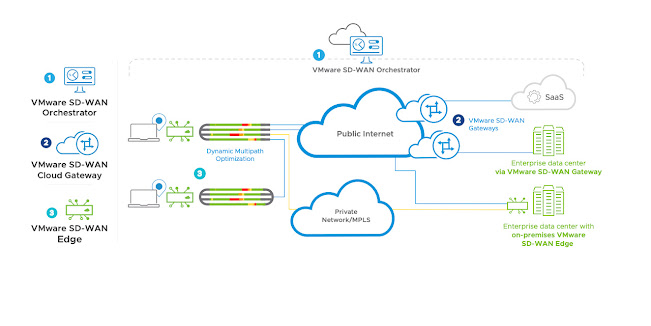All about the 4.x SD WAN Routing Behaviour Part 2: Routing, Route Redistribution and Preferences
SD-WAN has a kind of Plug&Play strategy when it comes to connectivity and routing.
- Therefore automatically a default route is established on every working WAN-Interface and on every Overlay tunnel.
- Additionally there is an automatic bidirectional redistribution on every Edge between Underlay, LAN and Overlay routes.
From a networking point of view a kind of routing nightmare with Mutual Redistribution in both direction on every Edge.
BUT by using an internal clever preferencing algorithm, routing loops and blackholes are mostly avoided.
A SD WAN administrator can avoid pitfalls and wrong paths by following some basic rules:
- Only enable Dynamic Routing when it is really necessary
- Never run a Dynamic Routing Protocol direct between Edges
If Dynamic Routing is needed then there are some further rules to consider:
- Prevent Redistribution form Overlay to Underlay (it is not needed in most cases)
- Restrict Redistribution from Underlay to Overlay to Edges (Hub) who are playing the role of transit points to reach underlay destinations
- Use
features like UPLINK to de-preference announcements if they are only
used as last resort, when preferred paths are not available
- Never redistribute dynamically learned tunnel endpoints for Overlay tunnels to the Overlay
0. Non SD Wan Destination Routes (NSD)
- Prefix typically reachable via IPSec from Edge or Gateway
- Only used when DCC is enabled
1. Edge
•Prefix reachable through VMware SD-WAN Edge
2. Router
•Prefix reachable through underlay, such as PE router
3. Partner Gateway
•Prefix reachable through Partner Gateway
4. Hub
Now let us look into various mechanism to restrict Redistribution
Underlay to Overlay Redistribution
...is controlled via Orchestrator (Configure/Overlay Flow Control/Edit)
by Checking/Unchecking Global Advertise Flagsfor BGP redistribution can also be prevented by either specifying
- Uplink Feature (set per BGP neighbor)
or
- Uplink Community Flag (set per prefix)
But this can be overwritten in the OFC by checking










Comments
Post a Comment